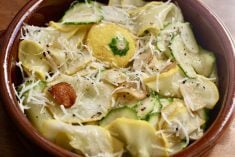Emmie Oddie was the author of this column for nearly 50 years. She contributed significantly to many families and individuals through her writing and work in rural areas. She has a bachelor of science degree in home economics and has energetically supported the profession through her teaching, leadership and work. As a home economist she has encouraged individuals and families to manage and use wisely the resources of food, clothing, money, energy and knowledge.
The Canadian Home Economics Association Foundation funds projects in the areas of home economics research, education and public service projects. Emmie has been a regular contributor to the foundation and supports its work and objectives.
Read Also

Farm auctions evolve with the times
Times have changed. The number of live, on-farm auctions is seeing a drastic decline in recent years. Today’s younger farmers may actually never experience going to one.
Many writers to this column have indicated how much they have enjoyed and used the information Emmie provided through the years. Contributions in her name to the Canadian Home Economics Association Foundation would be a unique way to honor Emmie and support the profession, to which she has dedicated so much.
Donations can be made by mailing a cheque to: Treasurer, CHEAF Foundation, 3807 Vialoux Drive, Winnipeg, Man., R3R 0A5. Indicate that the donation is in honor of Emmie Oddie. The foundation is a registered charity, registration #0589242-23-10, and a tax receipt will be issued.
Carrots for storage
As much as we enjoy our fresh home-grown carrots during the winter, cleaning them in the fall can be a real pain. A simple solution is brush off excess dirt, cut off tops and root hairs and wash them in the washing machine.
Fill the washer with cold water and add two to three gallons (eight-12 L) of carrots at a time. Run the washer on gentle cycle for five minutes. Leave the lid open so the machine will not spin. Drain the water and remove the carrots to a blanket or towel to air dry. Clean the washer after removing the carrots by wiping with a cloth, and pick out any carrot pieces.
The carrots can be packed in ice cream buckets with a paper towel or rag to absorb moisture. Plastic bags with small holes can also be used. Store in a fridge or cold storage room. Check monthly for excess moisture, remove carrots, dry and repack for storage.
Uses for the tomato crop
Fresh vine-ripened tomatoes are my favorite garden treats. Nothing tastes as good. A few years ago my uncle, Norman Sykes of Regina, introduced me to Sweet 100 tomatoes. They grow on climbing vines and produce an abundance of small cherry tomatoes in grape-like clusters. We love to eat them right from the vine as they ripen. The green tomatoes can be stored in a cool, dark place after picking to slowly ripen. Usually I put them one layer deep in cardboard boxes and cover with newspaper. One year I kept some in the fridge to have a few on Christmas day.
Another way I enjoy ripe tomatoes is to fry them.
Fried tomatoes and zucchini
Cut washed tomatoes in 1Ú2 inch (one centimetre) slices. Dip in beaten egg seasoned with salt and pepper, then in bread crumbs. Fry uncovered in hot bacon fat, butter or margarine until slices are tender and lightly browned on both sides (10-15 minutes). Zucchini slices can be dipped, coated and fried with the tomatoes. Season both with basil and oregano.
Freezing whole tomatoes
Often tomatoes will ripen all at the same time and there is just not enough time to deal with them. To avoid wasting the fruit, they can be frozen whole. Select ripe tomatoes that are free of cuts and soft spots. Wash the fruit, remove the stems, make a single layer on a cookie sheet and freeze for 24 hours. Pack in plastic bags and seal.
When ready to use, dip the frozen tomato in hot water and the skin will slip off. When thawed they will look and taste like canned tomatoes. The skinned, frozen tomatoes can be added to soups, stews, chili or spaghetti sauces.
Green tomato mincemeat
4 quarts chopped 4 L
green tomatoes
1 pound raisins 500 g
1 tablespoon 15 mL
cinnamon
2 teaspoons salt 10 mL
1Ú4 teaspoon allspice 1 mL
1Ú4 teaspoon cloves 1 mL
2 quarts chopped 2 L
apples
4 tablespoons mixed 60 mL
minced peel
3 cups white sugar 750 mL
2 cups brown sugar 500 mL
3Ú4 cup vinegar 175 mL
1Ú4 to 1Ú2 cup lemon 50 -125 mL juice
2 cups water 500 mL
Combine ingredients and cook slowly until tender and thickened. Stir frequently. Pour into hot sterilized jars and seal. You may use five cups (1.25 L) of brown sugar and omit white sugar.
Chili sauce
This is one of Alma Copeland’s favorite recipes for ripe tomatoes that was passed down from her mother.
Peel ripe tomatoes by dipping in boiling water, and then in cold water. Cook and mash the tomatoes.
2 quarts ripe 2 L
tomatoes
1 cup chopped onion 250 mL
1 cup white sugar 250 mL
1 tablespoon salt 15 mL
1 teaspoon cinnamon 5 mL
1Ú4 teaspoon cloves 1 mL
1 teaspoon of mixed 5 mL
spices in a bag or tea ball
1Ú4 teaspoon cayenne 1 mL
pepper
1 cup vinegar 250 mL
After simmering everything except the vinegar for 45 minutes, add the vinegar and bring to a boil. Remove spice bag and pour into sterilized jars and seal. Yields two quarts (two L).
Tomato sauce correction
In the Aug. 29 issue of How Do You Manage? there was a spaghetti sauce recipe using ripe tomatoes, for A Busy Mom in Nokomis, Sask. The amount of tomatoes was omitted from the sauce recipe. It should have been two gallons (eight L) or two four-litre ice cream buckets of fresh, ripe, whole tomatoes.
Sorry for the omission and thank you to “Concerned in Taber, Alta.” for bringing this to my attention.
Thickening tomato sauces
To thicken the consistency of a homemade tomato sauce, add one cup (250 mL) of cooked mashed pumpkin, squash or zucchini pulp for every four cups (one L) of sauce. These vegetables are bland enough that once the sauce is seasoned they go unnoticed. It is also a good way to put yellow vegetables in the diet.














